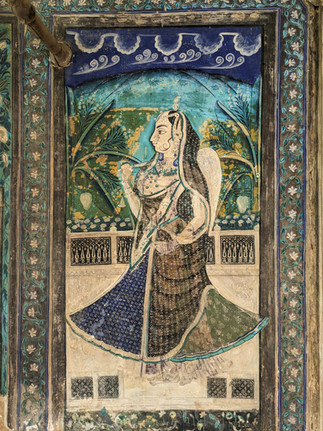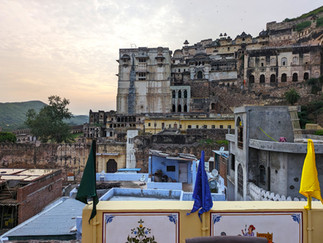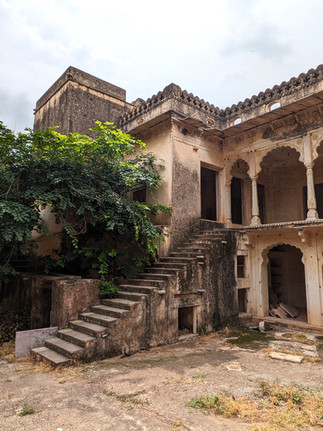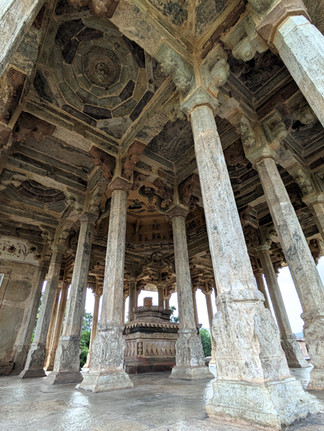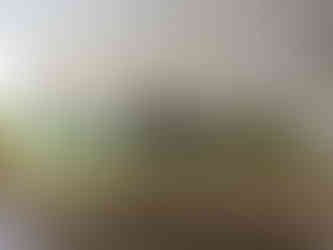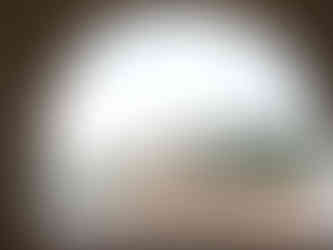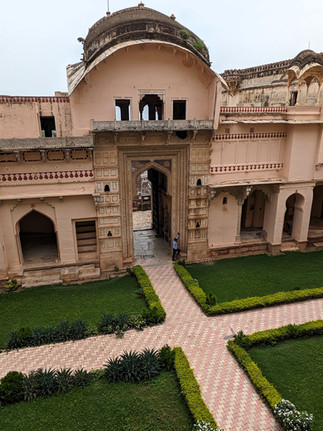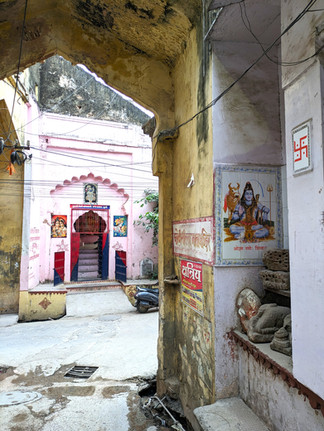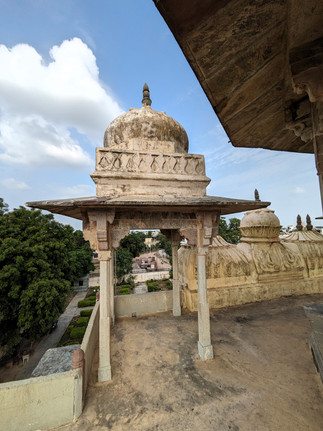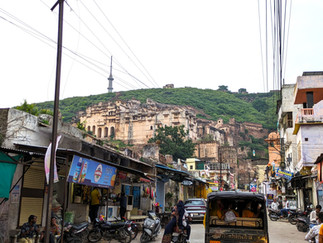The Tailor-Made Guide to 7 Attractions You Should Visit in Bundi, India
- Barry Pickard
- Jan 14
- 11 min read

**Disclosure: This post contains affiliate links. Regardless of this, please be advised that all opinions expressed in this blog post are genuine and authentically my own.**
Author: Barry Pickard
Hi, I'm Barry, the owner of Tailor-Made Itineraries and I have been designing bespoke self-guided tours for adventurous and curious travellers since 2015. I am a history graduate with a passion for travel.
I created this blog to show, through my own adventures, how you can have an incredible travel experience as an independent traveller, giving you the information to navigate the world with confidence.

Contents
Have you ever wondered what makes Bundi, India, so special? Maybe it’s the hidden stepwells that feel like secret passageways to another time, or the way its palaces perch proudly above the town, like guardians of a bygone era. As someone who’s explored Bundi firsthand, I can tell you it’s all of that—and so much more. This charming town doesn’t just sit on the map; it lives and breathes with sights, sounds, and stories that’ll make you want to linger.

Picture this: The rhythmic tapping of a hammer as an artisan works on brass trinkets in a narrow alley. The heady aroma of fresh spices wafting out of a tiny street kitchen. And just ahead, a palace that seems to have stepped straight out of a fairy tale, its walls alive with murals that have survived centuries. That’s Bundi for you—raw, vibrant, and utterly captivating.
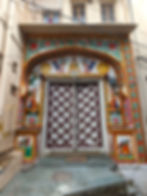
If you’re an independent traveler looking for authentic, off-the-beaten-path adventures, you’ve landed in the right place. This guide is built entirely on my own experience exploring Bundi, so every tip, every highlight, comes from my time walking those streets and climbing those steps. From enchanting palaces to quirky stepwells, I’ve got the inside scoop on the seven attractions you absolutely shouldn’t miss.

Bundi is located in the Hadoti region of Rajasthan, India, and is a relatively small city, of almost 150,000 people, but it is a treasure trove of history and culture, having been established in 1242 by Rao Deva Singh. The city flourished under the rule of various Rajput clans, leaving behind a legacy of magnificent palaces, forts, and step wells. The current raja of Bundi is Vanshvardhan Singh, who was crowned the 26th Maharao Raja of Bundi in 2022.
As you wander through the narrow lanes of Bundi, you'll be transported back in time. The city's main attraction, the Garh Palace, is one of India's largest palaces, and is overlooked by the Taragarh Fort. Bundi is also home to over 50 ancient and intricate stepwells, each with its own story to tell.

Bundi is not just a city; it's a living museum, a testament to the artistic and architectural prowess of its former inhabitants. So, if you're an independent traveller looking for an authentic Indian experience, pack your bags and set off on an unforgettable journey to Bundi. Trust me, this city will surprise you at every turn!
Don’t forget that Tailor-Made Itineraries delights in creating bespoke self-guided tours. So, if visiting any of these attractions appeals to you, reach out to me by email. I would be more than happy to design a self-guided tour around your requirements incorporating the stunning attractions you should visit in Bundi, or indeed, a general tour of India.
Attractions You Should Visit in Bundi, India
7. Garh Palace
“Jeypore Palace may be called the Versailles of India; Udaipur’s House of State is dwarfed by the hills around it and the spread of the Pichola Lake; Jodhpur’s House of Strife, gray towers on red rock, is the work of giants, but the Palace of Bundi, even in broad daylight, is such a palace as men build for themselves in uneasy dreams—the work of goblins rather than of men.” – Rudyard Kipling

As you approach the Garh Palace you will be in awe of it just as Kipling was. You’d be mistaken if you thought you were witnessing an imposing fort, with high walls and hillside location, but once you enter, you start to appreciate how this palace is actually a testament to the grandeur of Rajput architecture. Throughout the palace, you'll be greeted by intricate carvings and stunning murals, spellbinding artworks that offer a glimpse into the rich cultural heritage of Rajasthan.
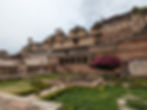
The palace was built in the 17th century by Rao Raja Bhau Singh and further expanded over several centuries by various rulers of Bundi. Today, the palace is decaying in parts and partly preserved in others. The palace complex is a cluster of numerous palaces, each with its own unique charm. Among these, the Chitrashala, also known as the Ummed Mahal, stands out for its beautiful frescoes depicting scenes from the life of Lord Krishna.

The Garh Palace is not just a place to visit, but a journey back in time. As you explore its corridors and courtyards, you'll feel as if you've stepped into a different era. So, if you're an independent traveller with a keen interest in history and culture, the Garh Palace in Bundi is a destination you won't want to miss.

Tailor-Made Top Tips:
The palace is large and rambling, so this is one occasion where I would encourage you to hire a guide, if there is one available. Only engage the services of a guide if there is one at the ticket kiosk.
There is only one set of toilets at the palace (and there are no toilets at the Taragarh Fort). They are located a short distance from the ticket kiosk. Walk away from the kiosk and head towards the buildings in the low outer wall (do not start to climb the slop up to the palace entrance).
The stone paths up to the palace are quite steep and slippery. There are handrails at certain parts, but I’d advise wearing footwear with a good grip. Especially when you head back down!
The Palace View Restaurant, near the entrance gate, is a great place for lunch or dinner. Sit at their rooftop terrace for a perfect view of the palace.
As the sun starts to set, the palace has a little surprise for you – it’s colony of bats will make an appearance, as they fly out foraging for their meal!
6. Taragarh Fort
The Taragarh Fort, which translates to ‘Star’ Fort, is a sprawling chain of walls, citadels, and defences, that dominates the steep hill which overlooks the Garh Palace and the city below. The fort was built by the Rajput rulers in the 14th century and played a key strategic role in the region’s history.

Within the fort is a small palace called the Rani Mahal, built for the wives and concubines of kings. There are also a number of stepwells in the vicinity of the palace that can be explored.

The star of the show, however, must be the amazing views of the city and the hills of the Aravalli mountain range.

Tailor-Made Top Tips:
Keep an eye out for the wild elephant decorations of the entrance to the Rani Mahal.
Please note that there are no facilities in the fort, so bear this in mind before ascending the hill. It is also a good idea to make sure that you have enough water to drink for your visit.
As with the path up to the Garh Palace, sturdy shoes are required for the walk up to the fort.
5. Nagar Sagar Kund
Located in the centre of Bundi, Nagar Sagar Kund are twin stepwells have been a little neglected and seem to be taken for granted within the hustle and bustle of shops and stalls, but that is such a pity. Bundi is known as the “City of Stepwells”, and these are two lovely examples. During my travels around Rajasthan, I was constantly taken aback by this region’s intricately designed stepwells, amazing for such a utilitarian piece of civic architecture.

Tailor-Made Top Tips:
The stepwells are located near the Chougan Gate and are accessible to the public at all times.

4. Raniji Ki Baori
The Raniji Ki Baori, also know as the Queen’s Stepwell, is a beautifully maintained well that was built in 1699 by Rani Nathavati Ji Solanki, the younger queen of the ruling Rao Raja Anirudh Singh of Bundi. The stepwell was constructed in response to frequent droughts in the region and was to serve as a vital water source for the city.

The stepwell descends to a depth of 46 metres and has more than 100 steps. The well is surrounded by superb carvings on the pillars as well as a grand arched entrance. There are sculptures of Ganesha, Saraswati, and Gajendra Moksh, along with other incarnations like Matsya, Varaha, and Narsingh.

If you are enjoying this list, remember and subscribe to my mailing list to receive my latest blog posts.
3. Dhabhai Kund
To my mind, the Dabhai Kund is the most impressive stepwell in Bundi, with its symmetry really capturing the attention. It is situated within a pleasant tree-lined enclosure, but access can be made to the complex at all times.

Tailor-Made Top Tips:
The stepwell is easily reached by autorickshaw.

2. 84 Pillared Cenotaph
The 84-Pillared Cenotaph, also known as Chaurasi Khambon ki Chhatri, is a beautiful monument, just a ten-minute autorickshaw drive from the city centre. This cenotaph was constructed in 1683 by the Maharaja of Bundi, Rao Raja Anirudh, in memory of his wet nurse, Deva. Deva had cared for and nurtured the prince during his childhood, and this cenotaph stands as a tribute to their bond.

The monument is made from white sandstone, with the entire structure being supported by 84 pillars. The roof is adorned with intricate decorations, and there is a large Shiva linga in the centre. This phallic symbol celebrates its role in creation and is associated with the deity Shiva.

Tailor-Made Top Tips:
There is a set of stairs which leads up to second floor. From here, you can get a view over Bundi and see the stone canopy and its columns up close.
There is a small, pleasant garden around the Cenotaph, which is an ideal place to chill out in.
1. Sukh Mahal
On the banks of the Jait Sagar Lake, with its armada of water lilies, it is easy to see why the Sukh Mahal is also known as the Palace of Bliss. Constructed in 1776 as a summer retreat for the royal family, the palace’s most famous resident was probably Rudyard Kipling, and it is said that much of his novel Kim was written here.

The main building of the palace has been converted into a history museum, displaying mainly weapons and stone carvings.
If you are enjoying this list, remember and subscribe to my mailing list to receive my latest blog posts.

How to Get to Bundi
By Air - The nearest airport is Sanganer Airport in Jaipur which is about 206 kms away. Jaipur has regular flights to almost 30 Indian cities, including New Delhi, Mumbai, and Chennai, and has an international connection with Dubai.
By Rail – The railway station is located about 4 kilometres south of the old city. There are direct railway connections between Bundi and Jaipur, New Delhi, Kota, Udaipur and Kolkata.
By Road – Buses to Bundi are available at regular intervals from Ajmer, Bijolia, Bikaner, Chittorgarh, Jaipur, Jodhpur, Kota, Sawai Madhopur and Udaipur.
Hire a Driver - Hiring a driver is a more economical and personalised way of travelling Rajasthan than booking with a bus tour operator. This is my own preferred mode of transport when travelling in India, and Rajasthan in particular. I used the excellent services of Vivek at Just To Travels to organise this for me – website & email.
Getting Around Bundi
The attractions mentioned above are all handily located near the centre of the city, and you can comfortably walk between them. The auto-rickshaws are a handy alternative if you want to take it easier, but always negotiate the fare price before setting off.
Where to Stay in Bundi
Bundi is still a hidden gem in Rajasthan, indeed, many of my Indian friends had not even heard of it, so you will find that there are only a handful of small hotels like the Hotel Nawal Sagar Palace or the Haveli Braj Bhushanjee. The city of Kota is approximately 45 km away from Bundi (just under an hour’s drive), and there is a much larger selection of hotels here, if you can’t secure one in Bundi itself, such as the Country Inn & Suites by Radisson Kota and the Umed Bhawan Palace.
I stayed at the Dev Niwas and found it very comfortable, with excellent service. Just a ten-minute walk from the Garh Palace and also the centre of the city, the hotel has a lovely terrace, served by a good restaurant, with an excellent view of the Garh Palace. Please note that the basic rooms do not have air conditioning, so I’d recommend booking the slightly more expensive rooms with AC. It was an ideal base for my Bundi exploration.
What is The Best Time to Visit Bundi?
Bundi experiences a local steppe climate with little rainfall throughout the year. Spring and Summer (March – June) brings hot, dry weather, between 17°C to 41°C, with the Monsoon season (July – September) bringing similar temperatures, but most of Bundi’s annual rainfall. Autumn (October - November) has temperatures ranging from 14°C to 34°C, and Winter (December - February) ranges from 9°C to 27°C.
Weatherwise, the best time to visit Bundi is from October to March, when the weather is cool and pleasant. However, I visited during August, and despite the heat, my pale Scottish skin wasn’t overly bothered by the climate.
How Long Should You Stay in Bundi?
At a push, you could see the attractions noted above within one day, but I would advise that two days would make a more comfortable visit. Take in the palace and fort during the first day and the remaining attractions the following day. However, I was really impressed with the laid-back atmosphere, pleasant people and interesting city centre, and I would love to return to Bundi, just to relax and soak up its essence. You can really experience a calmer, less busy India here in Bundi, so if you want to see this side of the subcontinent, I’d suggest adding a few more days to your itinerary and enjoy this off-the-beaten track gem.
Conclusion
Bundi will captivate you with its timeless charm, with this little-known city offering a glimpse into the rich tapestry of Rajasthan's history and culture. From its majestic forts and intricate step wells to the warmth of its welcoming people, Bundi will leave an indelible mark on every traveller’s heart. I can honestly say that Bundi will linger long in my memory, and I feel it beckoning me back to uncover more of its hidden treasures.
Related Blog Posts
If you would like more information on the exciting places to visit in Rajasthan, please view the Tailor-Made Itineraries posts below:
Comment below and let us know what your favourite place was to visit in Bundi.
Don’t forget that Tailor-Made Itineraries delights in creating bespoke self-guided tours. So, if visiting any of these attractions appeals to you, reach out to me by email. I would be more than happy to design a self-guided tour around your requirements incorporating the stunning attractions you should visit in Bundi, or indeed, a general tour of India.
Join me next time on my adventures when I recount the many captivating step wells that can be explored in Rajasthan. Tailor-Made Itineraries posts every two weeks, and you can subscribe to the latest blog and newsletter here. Until then, happy reading and safe travels.
Barry
Contact Me: tailoritineraries@gmail.com
Tailor-Made Itineraries creates one-of-a-kind bespoke self-guided travel itineraries for adventurous and curious travellers.
These self-guided tours deliver a personalised and exciting holiday experience that takes the effort out of trip planning.









